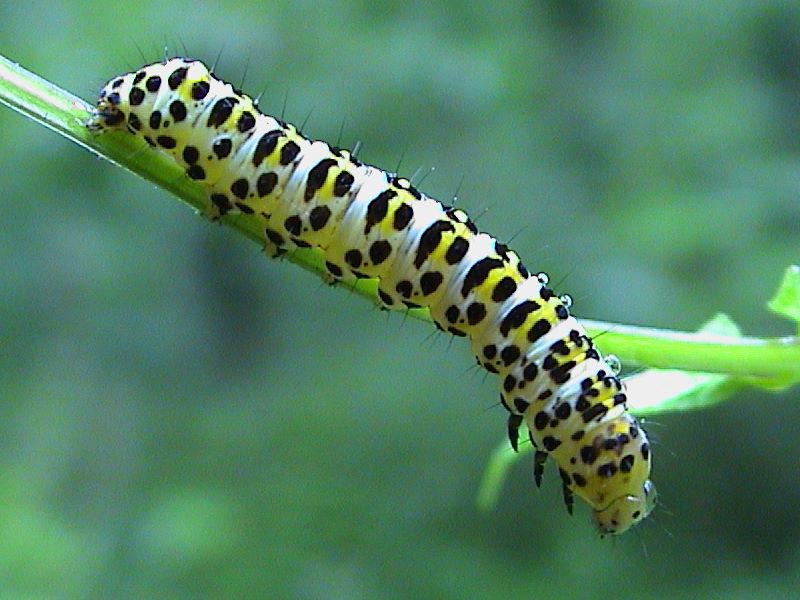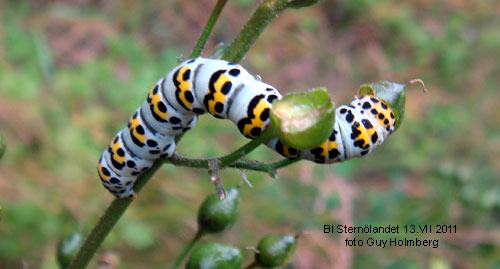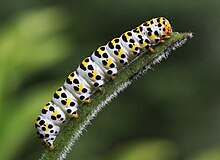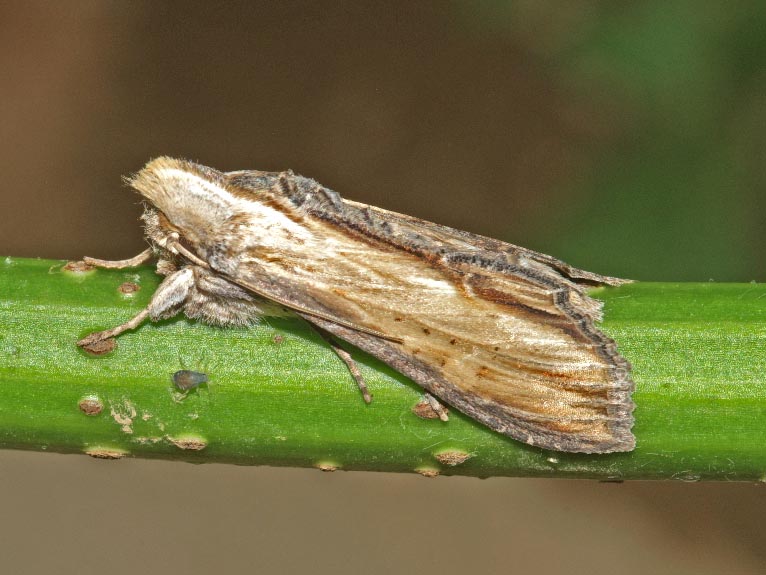Shargacucullia scrophulariae
Figwort monk ( shargacucullia scrophulariae )
The figwort monk ( shargacucullia scrophulariae ) is a butterfly (moth ) from the family of cutworms ( Noctuidae ).
- 4.1 Notes and references
- 4.2 Literature
Features
The figwort monk reaches a wingspan of about 45 millimeters. At the top it has a distinctive hair. The forewings are brown yellow, mostly brighter than the similar mullein Monk ( shargacucullia verbasci ) and at the anterior margin gray. The Vorderflügelsaum is considerably curled. Above the dark inner edge a slight lightening, usually without white wiping. A precise distinction for mullein monk is often clearly possible only by genital examination. From this one can see differences in the Valven.
The caterpillars reach a length of up to 50 millimeters and vary in color from green, blue or gelbweißlich. The yellow dorsal line dissolves into individual spots. There is a black drawing, which is developed on both sides of a closed arc spot on each segment. Below this arc spots are more black spots. The head is yellow with black spots. The caterpillars are similar to those of the gray -dusted mullein monk ( shargacucullia lychnitis ) and the mullein - monk. From the first-mentioned way you can distinguish them by the black rings between the segments of the latter by the more powerful and simpler drawing pattern and the black vertical bars on the sides.
The doll is of a brownish-yellow color.
Similar Species
- Grey wool Powdered herb monk shargacucullia lychnitis ( Rambur, 1833)
- Mullein Monk shargacucullia verbasci (Linnaeus, 1758)
- Shargacucullia gozmanyi G. & L. Ronkay, 1994
- Shargacucullia scrophulariphila (Staudinger, 1859)
Geographic occurrence and habitat
The figwort monk is an expansive species whose range extends in the north to the North and Baltic Seas. In Western and Central Europe, the species is widespread. From the British Isles, there is little evidence from the south of England, in the Iberian Peninsula it is widespread in central Spain. In the south, the range extends to Sicily and Greece. The southwestern and southeastern borders of the distribution area are currently poorly known because of the possibility of confusion with similar species. A record from Morocco is classified as a misidentification. The easternmost locality is located in western Turkey. In Germany, the incidence of southern decreases to the north. In the Alps, the figwort monk is found up to 1,600 meters. The flight area extends to floodplains, river, stream and forest edges, but also on slopes and rocky areas.
Way of life
The figwort monk is one generation a year, the moths fly from mid-May to mid-August. The moths rest during the day. They fly at dusk and in the evening at various flowers and also come to light. The eggs are usually laid singly on the flowers of the foodplant. The caterpillars can be found from mid-June to mid-August. They eat at the following plants:
- Winged figwort ( Scrophularia umbrosa )
- Knotted figwort ( Scrophularia nodosa )
- Water figwort ( Scrophularia auriculata )
- Dog- figwort ( Scrophularia canina )
- Mealy mullein ( Verbascum lychnitis )
- Mullein ( Verbascum thapsus )
The caterpillars are sitting during the day free of the plant. Obviously its color acts as a deterrent to predators. They feed on buds, flowers and fruits of the preferred host plant. Pupation takes place in the fall in the ground in a very tight cocoon, where the dolls are often one to two years.










